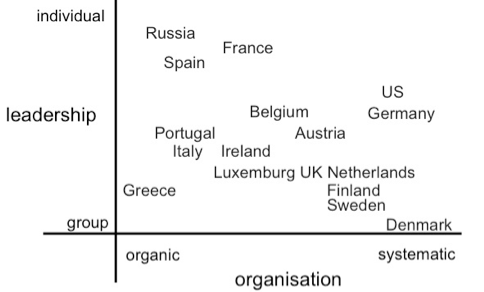Sign up for FlowVella
Sign up with FacebookAlready have an account? Sign in now
By registering you are agreeing to our
Terms of Service
Loading Flow

Research
Mole
John Mole describes organisational cultures on the basis of two axes, one on leadership and the other on organisational structure. Leadership varies from a preference for a strong individual as leader to group leadership (e.g. management team). Organisational structure ranges from organic to systematic. A systematic structure has been meticulously designed and is reflected in a blueprint like a drawing with boxes and connecting lines, reflecting authority. An organic organisation appears to produce goods or to deliver services without any apparent organisational principle. However, somehow it works. You need to work there for a while to discover how things are done. The graph on the left indicates the relation between national cultures and their preference for organisational culture.
